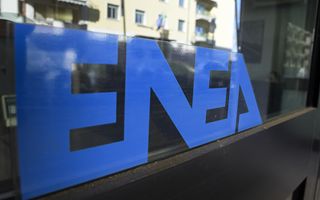(Finance) – Special prototypes for the space farming, cave gardens and facilities capable of simulating the conditions present in space, but also bioregenerative systems For recycle resources and energy on orbiting stations. These are some of the innovations that AENEAS presents toInternational Astronautical Congress (IAC)scheduled from 14 to 18 October in Milan (Allianz MiCo – Milan Convention Centre), the most important international conference dedicated to space, organized byInternational Astronautical Federation (IAF) and hosted in Italy by Italian Association of Aeronautics and Astronautics (AIDAA)with the support ofItalian Space Agency (ASI) And Leonardo.
In this 75th edition of the international conference, ENEA will be present at the stand dedicated to “Space It-Up!” projectproposed as an extended partnership on PNRR space activities And financed with 80 million euros from ASI and from Ministry of University and Research (MUR).
In particular, ENEA will present prototypes and scale models of gardens for the cultivation of microgreens in space and videos to illustrate laboratories, skills and professionalism specialized in innovative biotechnologies and frontier technological solutions to allow men, plants, insects and bacteria to survive in orbit to rebuild bioecosystems in space to support life in an extraterrestrial environment. In particular, the activities on display will be:
HORT3SPACE – An innovative, fully automated system for the hydroponic cultivation of different species of microgreens, equipped with specific full-spectrum LED lights and an integrated robotic arm, set up inside a cultivation chamber in a self-supporting inflatable tent. Created by ENEA in collaboration with Sapienza University of Rome, Hort3Space participated in the Amadee24 mission to simulate a mission to Mars organized in 2024 by the Austrian Space Forum (OeWF) in a desert region of Armenia.
GREENCUBE – A micro-garden to test the possibility of growing fresh vegetables in a space environment, without the supervision of the astronaut. The nanosatellite with the microgreens cultivation chamber on board, created thanks to the collaboration between ASI, Sapienza University of Rome, ENEA and Federico II University of Naples, was brought to an orbit of approximately 6000 km, where it was the scientific experimentation objective of the mission.
CALLIOPE – Unique facility in Europe in the field of qualification and study of the radiation resistance of materials, components and biological systems for hostile environments, Calliope allows you to conduct tests with extremely high absorbed doses and very accurate dosimetric control. Useful for numerous applications in the space, energy, high energy physics and cultural heritage sectors, the facility is among the excellences of the ASIF (ASI Supported Irradiation Facilities) program – a first-level network of irradiation facilities serving the national and international space community according to the standards of the European Space Agency (ESA) – and of AIDA 2020, the advanced European infrastructure of CERN (Conseil européen pour la recherche nucléaire) dedicated to the development of radiation detectors.
GEA (Analog Explorations Group) Project – An “analog” cave mission to simulate the environmental confinement conditions of lunar environments. GEA will allow us to study the prolonged stay of astronauts in confined environments, carrying out scientific activities and developing experiments on problems such as isolation, the absence of light and confined spaces. A microgreens cultivation system in caves will also be developed. In addition to ENEA, the Sapienza University of Rome (coordinator) and the Italian Alpine Club participate in the project.
BEATRICE project – An integrated prototype capable of treating astronauts’ wastewater thanks to microbial fuel cells that will produce electricity and fertilizer gels, useful for the cultivation of microgreens and nano-tomatoes. In addition to ENEA, they participate in the project, financed by ASI, Sapienza University of Rome and Southampton, Cnr, Kayser Italia and the Italian Alpine Club.
